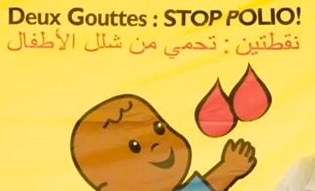(World Health Organization HQ, Geneva) – The world is closer than ever to ridding the planet of the polio virus, but the global polio eradication effort faces a huge funding shortfall that may undermine humanity’s progress against the disease.
First: the good news. When the WHO and partners (including Rotary International) convened the Global Polio Eradication Initiative in 1988, there were more than 125 countries in which polio was endemic. 350,000 people were infected.
That was 24 years ago. This is what the global polio epidemic looks like as of May 1 2012:
There are only three countries in the world in which Polio remains endemic (Nigeria, Pakistan and Afghanistan) and one country in which it was recently imported: Chad. India was declared to be polio-free this year, which was a major milestone. In all, there were about 1,000 confirmed cases of polio last year, a 99% decrease since the start of the campaign.
The bad news: This progress may not hold. After years of decline, polio cases have tripled last year in the remaining three endemic countries.
The global polio eradication initiative is facing its largest funding gap since inception. They are short $1.09 billion out of $2.23 billion budget. “We have faced shortfalls before, but this is unpredented.” Says Bruce Aylward, the longtime leader of the WHO’s polio eradication efforts. “We are unable to renew some of our contracts for 2013.” Aywalrd says that the WHO has had to scale back efforts in 24 countries to make up for the shortfall.
Polio spreads very easily –it’s the nature of the virus. The “re-importation” of polio to previously polio-free countries will occur unless nearly 100% of all children receive vaccination. That requires sustained funding. In parts of Pakistan and Afghanistan, polio vaccination efforts are falling victim to an ever shrinking humanitarian space. In Nigeria, polio is endemic in the northern part of the country which has a weak health care systemand suffers from persistant insecurity. (The August bombing of UN headquarters in Abudja killed several members of the WHO’s polio eradication team.)
In the end, though, the greatest challenge is sustaining the donor funding to complete the job. It cost donors $9.5 billion over 25 years to get to this point of near-eradication. Today, about 600 million children a year are vaccinated through the global polio vaccination program. “There is no technological or biological barrier to eradicating polio,” says Aylward. “The challenge is mustering the money and political will to do so.”
Next week, the World Health Assembly, which is the governing body of the WHO, will declare polio a “global health emergency” to inject some political momentum to this fight and potentially free up new funds to help cover the gap.
If these funds do not materialize, we can expect polio to make a slow and steady come back. It is the nature of the virus.


